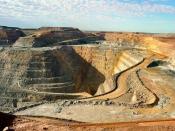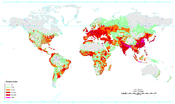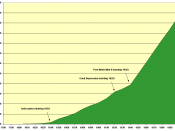This year, the number of people living in Australia is approximately 21, 600,000. Over the years, this number has changed dramatically, increasing by 12.5% in the past decade. Australia's population is constantly varying, although the resident population is not the only factor. The population of Australia is changing in density, age groups, as well as in immigration.
Australia is continually changing in population density. It is shown that 85% of the people live within fifty kilometres of the coastline, and 87% live in urban centres with populations over one thousand. Over the years, the rural population density has declined as the urban areas have grown larger. Rural Australia has the fastest population decline. In 1933, 37.4% of the population lived in the rural areas but recently in 1976 it is shown that only 13.9% do. Urbanisation constantly happens because of things like better employment opportunities, or because there are not many job offers available in the country.
Some people are not suited for quiet town life, find it boring, and want to be where all the action is. Many students come for better education available in the city. Urbanisation, however, has created many problems for the environment. As the city population becomes larger the outer suburbs slowly start to grow outwards and bigger to accommodate the increasing number of people. The natural environment is damaged because more space is required for construction, which causes disrupted ecosystems and destroyed habitats. The more humans occupy one area, the more pollution, waste and disruption is caused. Larger cities demand more energy, and also, because of the growing population there will be more pressure on the government to supply basic facilities and infrastructure.
Australia's population has slowly been ageing over the years. In the next few decades, it is predicted that numbers of people...


